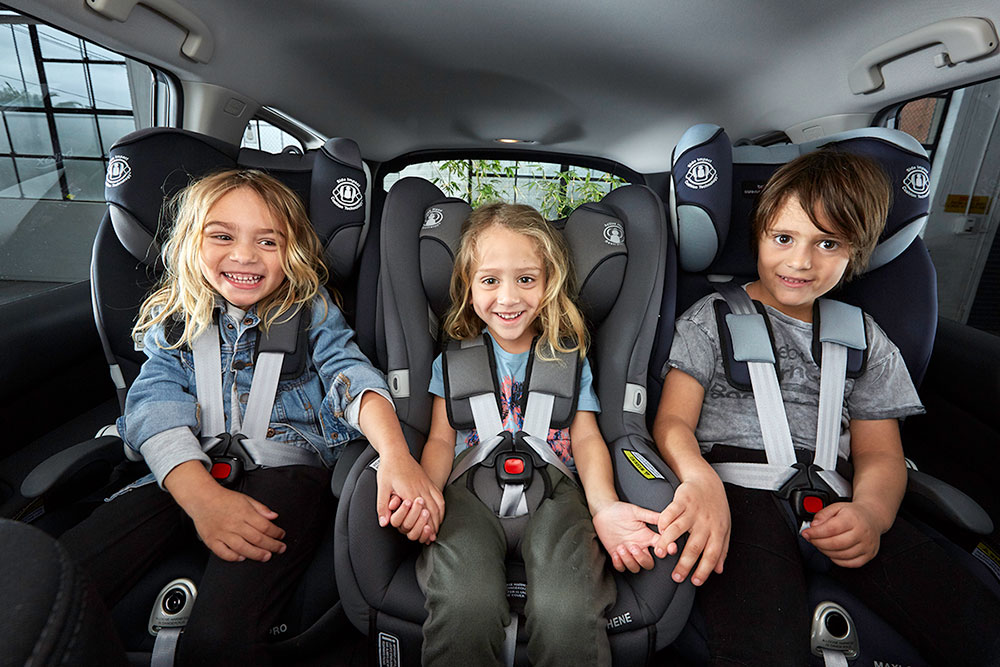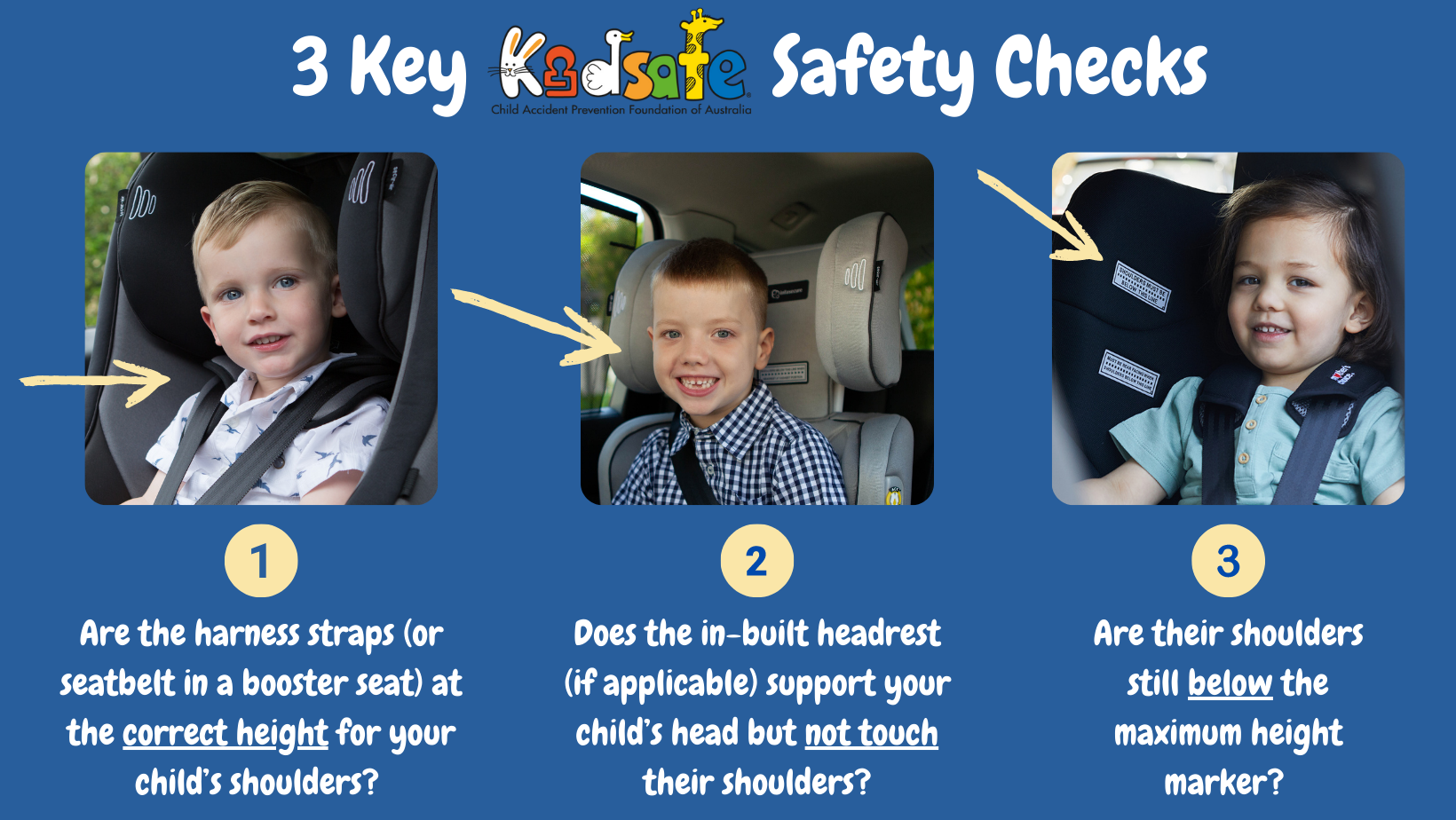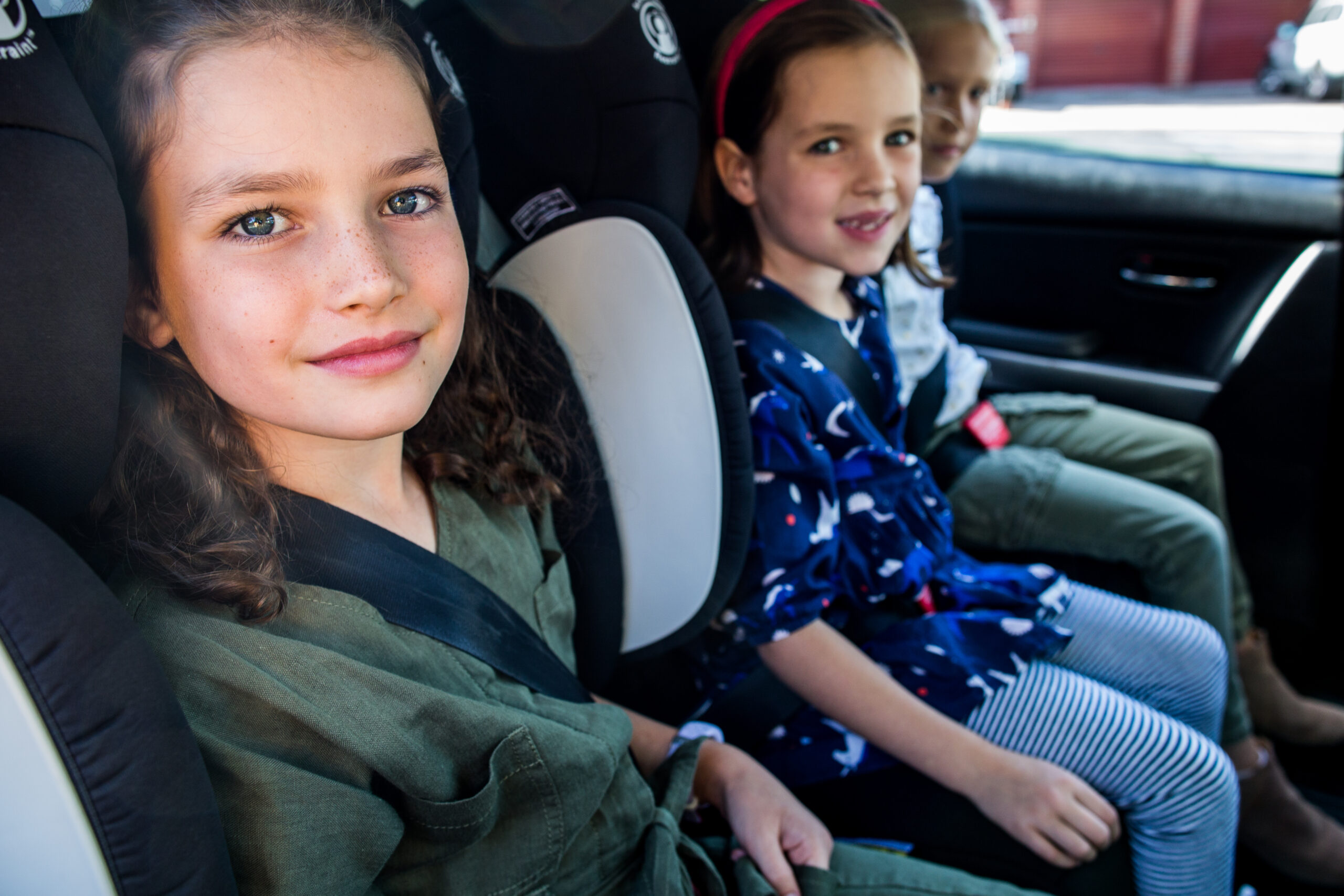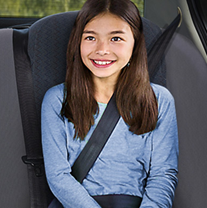
Sometimes it feels like you only blinked your eyes and your child just grew another centimetre – those pants are not fully covering their ankles, and the long sleeves on that top look more like a three-quarter sleeve! As signs appear that your child needs the next size up in clothes, it’s an important reminder to regularly check that their child car restraint is still adjusted to fit them properly, to help ensure they are travelling safely in the car.
Children are more fragile than an adult and need extra protection to help prevent serious injuries in the event of a car crash – which is where child car restraints come in. To help make sure the child car restraint can do its job properly, it’s vital to know when to make adjustments and when it is time to move your child onto the next type of restraint.
For some parents and carers this may sound easy-breezy, while for others it could sound daunting. But don’t worry, in this month’s blog we will break down the key steps and answer some of the most frequently asked questions for you.
HOW DO I CHECK THAT MY CHILD STILL FITS IN THEIR CHILD CAR RESTRAINT?
Child car restraints aren’t a ‘fit and forget’ system, they have many parts that are designed to be taken out, moved and adjusted to suit your child as they grow.
To assess whether or not your child car restraint is still adjusted to fit your child correctly and if the restraint is still the correct one for their size, there are 3 Key Safety Checks Kidsafe recommends performing.

To help you undertake these checks, here are a few important points to keep in mind:
Harness straps
- Rearward facing restraints: harness straps should come from the slot nearest to your child’s shoulders, but not below them.
- Forward facing restraints: use the harness strap slot nearest to your child’s shoulders but no more than 2.5cm below.
Shoulder height markers
Shoulder height markers come on all child car restraints and show when:
- your child can start using that particular restraint,
- it can be converted to the next mode (e.g. rearward facing to forward facing), and;
- your child has outgrown the restraint.
If you answered ‘no’ to any of the 3 Key Safety Checks, then it is time to make some adjustments. Follow the instructions in your manufacturer’s manual to find out how, or if you’re unsure, you can book in for a free child car restraint safety check as part of our ‘Safe Seats, Safe Kids’ program.
AT WHAT AGE CAN MY CHILD STOP USING A BOOSTER SEAT?

If you have an older child in primary school, then chances are they have asked you why they have to use a booster seat and when they can move out of it – more times than you can count.
Many parents start to think that their child is getting old enough to ditch the booster seat and ride in the car with just a seatbelt after they turn 7 – and you won’t find many disagreements from the kids. However, age is not the factor that determines whether or not your child can safely travel in a car using just an adult seatbelt.
Just because your child has reached a particular birthday or is the same age as their friends or cousins who are no longer using a booster seat, this is not an indication of them being able to safely travel in only an adult seatbelt.
WHY DOES THE LAW SAY KIDS OVER 7 YEARS CAN USE EITHER A BOOSTER SEAT OR AN ADULT SEATBELT?
While there are laws in Australia regarding the use of child car restraints, these outline the minimum requirements. There’s more that can be done above and beyond these minimum requirements to help provide maximum protection for children, which is where the Best Practice Guidelines come in.
The Best Practice Guidelines recommend leaving children in their booster seat for as long as they fit – not graduating them because they turn a certain age. If a child moves out of their booster seat before they are safely able to use only an adult seatbelt, their risk of serious injury can be increased by up to 3.5 times.

SO HOW DO I KNOW WHEN MY CHILD IS READY TO TRANSITION TO USING ONLY AN ADULT SEATBELT?
You may be wondering, if age isn’t the deciding factor, how can I be sure that my child will be able to travel safely before I make the decision to move them out of their booster seat?
The good news is that the Best Practice Guidelines have a simple method which can help you to assess when they are ready to transition – the ‘5 Step Test’.
This test takes into account several factors – your child’s size is one of these, but as you will read below, it’s not all about how tall they are.
Simply put – a booster seat helps to keep your child safe in the event of a crash by ensuring the seatbelt sits in the right position on their shoulder and hips, doesn’t dig into their neck or stomach (and internal organs); and it also helps to absorb some of the force of the crash.
So you want to be absolutely sure that your child will be travelling safely before you make the transition out of a booster seat.
WHAT IS THE ‘5 STEP TEST’?
As the name suggests, the test involves a series of 5 steps – these look at the length of your child’s limbs, how their body is positioned on the vehicle seat and where the seatbelt sits across them.
If you cannot answer ‘yes’ to each question in the 5 Step Test, then it is not safe for your child to ride in only an adult seatbelt and they must continue to use a booster seat. For most kids, they won’t pass the test until they are at least 10-12 years old.
Because all makes and models of cars are different, you may also find that your child will fit an adult seatbelt in different cars at different ages.
Watch the 5 Step Test in action:
Have you heard about our Safe Seats Safe Kids FREE child car restraint fitting and safety check program?
Parents and carers in Victoria can book a free child car restraint fitting or safety check with a professional fitter. As well as having the installation of your child car restraints checked and any adjustments or issues rectified, you are also provided with a range of information and advice to help ensure you feel equipped to be able to create a safe travel environment for your child on every trip.
Please sign up here to be notified of upcoming bookings in your local area.
If you have a question about child car restraints, feel free to reach out to our Child Car Restraint Manager on 03 9036 2306 or email us via info@kidsafevic.com.au
To view some video tips on how to adjust your child car restraint, please visit the Safe Seats Safe Kids resources page.
Follow us on our socials for daily tips and advice about more child injury prevention safety topics such as water safety, product safety, and general safety in and around the home.



